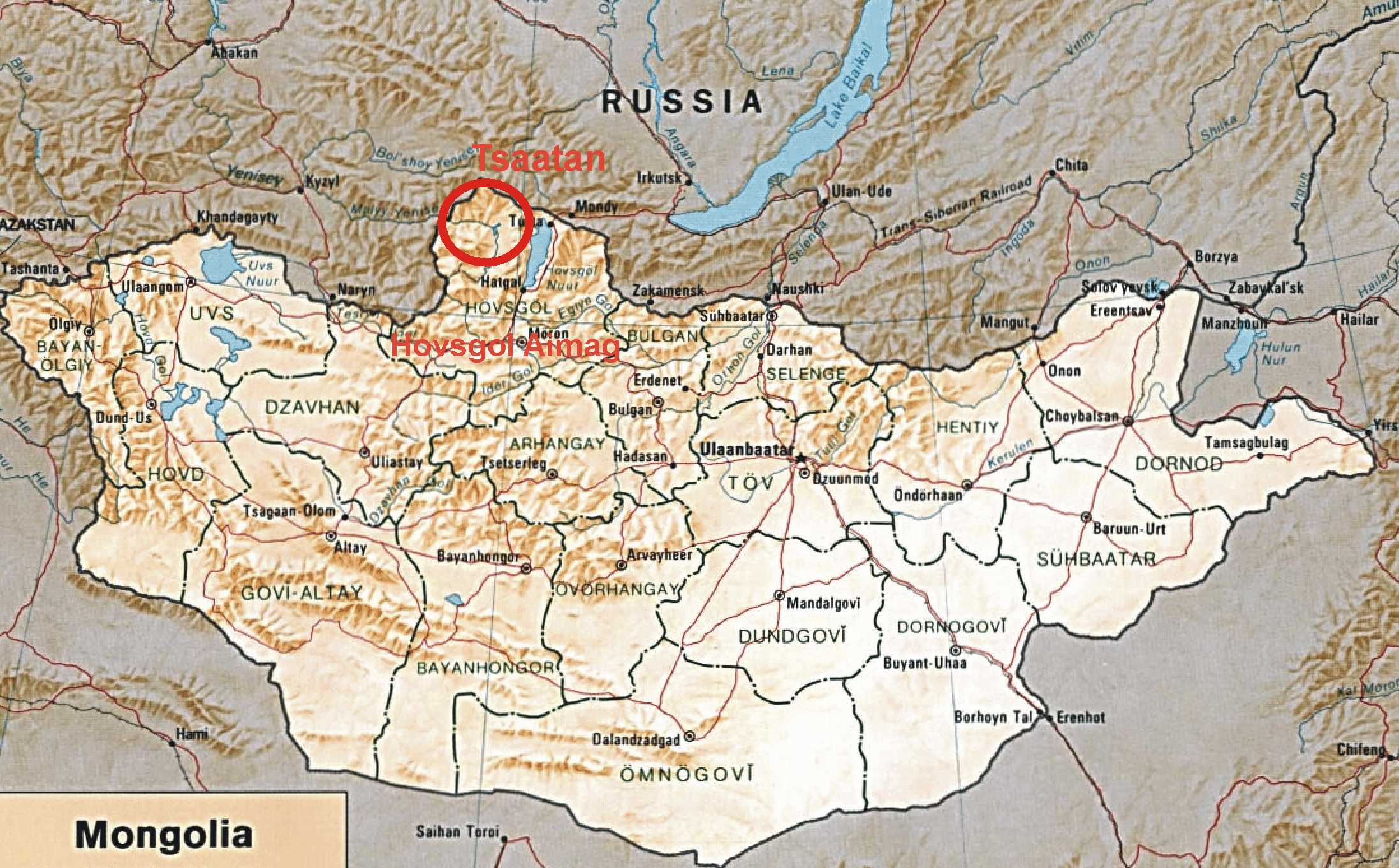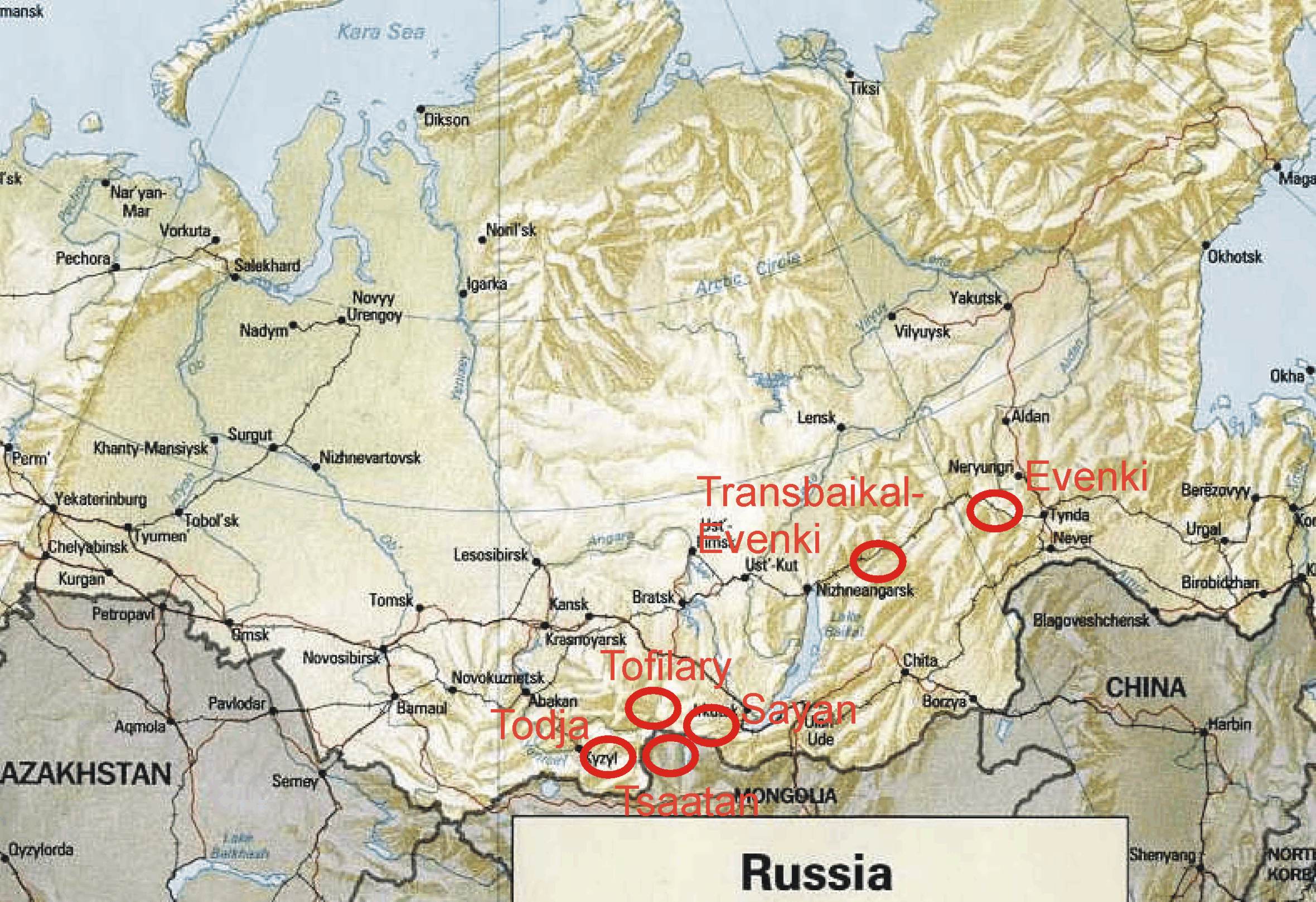Home
The Reindeer Run: The Tsaatan are a people living in the Mongolian Taiga in the province (aimag) of Hovsgol in the northwest of Mongolia. Their name originates from the word tsaa meaning reindeer and tan meaning belonging to. A people belonging to reindeer and reindeer belonging to and shaping a people and their culture. They live a nomadic lifestyle shaped for the needs of their animals. They migrate up to 10 times a year, moving on to better grazing for the reindeer. Mongolia Taiga (ca. 2500 m high) Many parts of the Mongolian Taiga cannot be reached by a horse,let alone a car, only on foot or riding a reindeer. Unlike the Scandinavian reindeer, some of the Tsaa are trained to carry a rider. The Tsaatan use a horse saddle, which they tie in a special way around the belly and the neck of the reindeer. Riding on a reindeer is a constant battle to maintain balance. If you move too far to either side, the saddle will turn as well and you find yourself lying on the earth wondering what had happened. Not only the Tsaatan live the hunter/gatherer lifestyle of reindeer herders, but also peoples on the Russian side, in the Todja region of Tuva, in the Eastern Sayan mountain range and in the Tofilar region in Irkutsk. All of them are at the risk of losing their traditional lifestyle and knowledge. While earlier trade and migration between the people in the Mongolian and Russian taiga was possible and ensured healthy animals, the situation has deteriorated since the closing of the border and even more so since the downfall of the communist system and the gradual change to market economy. Ongoing projects try to stabilize the number of reindeer by supplying medicine and veterinary support. However, ultimately, especially for the Tsaatan in Mongolia the only means of survival of both the Tsaa and the Tsaatan is to import reindeer from Russia! From further away in Russia. But only mountain taiga reindeer used to living in similar surroundings as they would have in Mongolia can be used. They are bigger and stronger than tundra reindeer further in the north and northwest. Also their migration characteristics differ from those of tundra reindeer. The smaller tundra reindeer cannot be integrated into the population of mountain taiga reindeer and their habitat. Tsaatan tipis with Tsaa Riding in the Taiga on a Tsaa is very tricky The Evenki in the Aldanksi mountains of southern Yakutia and in the northeast of the Baikal Lake also live with reindeer in mountain taiga areas. Their situation is better so we hope to be able to buy reindeer off them. How can the reindeer be brought south from Yakutia to the Tsaatan in Mongolia? This is what this project is about: Herding reindeer from Yakutia to Mongolia The first aim of this project is to bring reindeer to the Tsaatan, to support the survival of the Tsaatan culture and language and to make the Tsaatan and the problems of reindeer husbandry in those areas more known to the public. The second aim is to do this in the traditional way by herding them south, not transporting them in a train or truck. I want to find scholars of anthropoloy, linguistics and reindeer husbandry who are willing to support this project and give it a scientific background. To be able to pull this off we need media coverage, newspapers, magazines, TV. A documentary could be realized, portraying the Tsaatan and the reindeer trek. The challenges and difficult situations as well as the multicultural exchanges and the laughter and life during such a herding trek would make excellent material for a documentary. The multicultural exchanges I envisage could include representatives of the Evenki joining us for the Reindeer Run, as well as people from other reindeer nations, including the European ones. Maybe a Tsaatan can arrange to join us and teach his language. Knowledge in reindeer husbandry, traditions and languages could be exchanged. If the publicity the Tsaatan and the Tsaa get is extensive enough, it will be easier to raise the money necessary to buy the reindeer and arrange the papers. Hopefully the publicity can also help as far as bureaucratic procedures are concerned.
Project Outline



